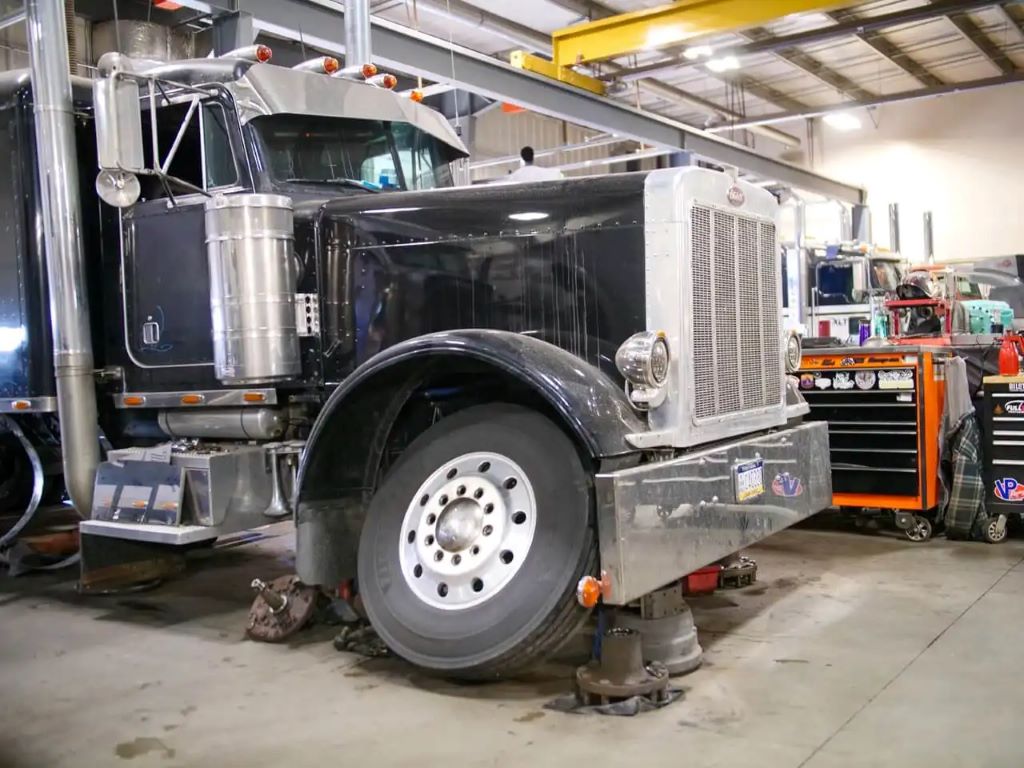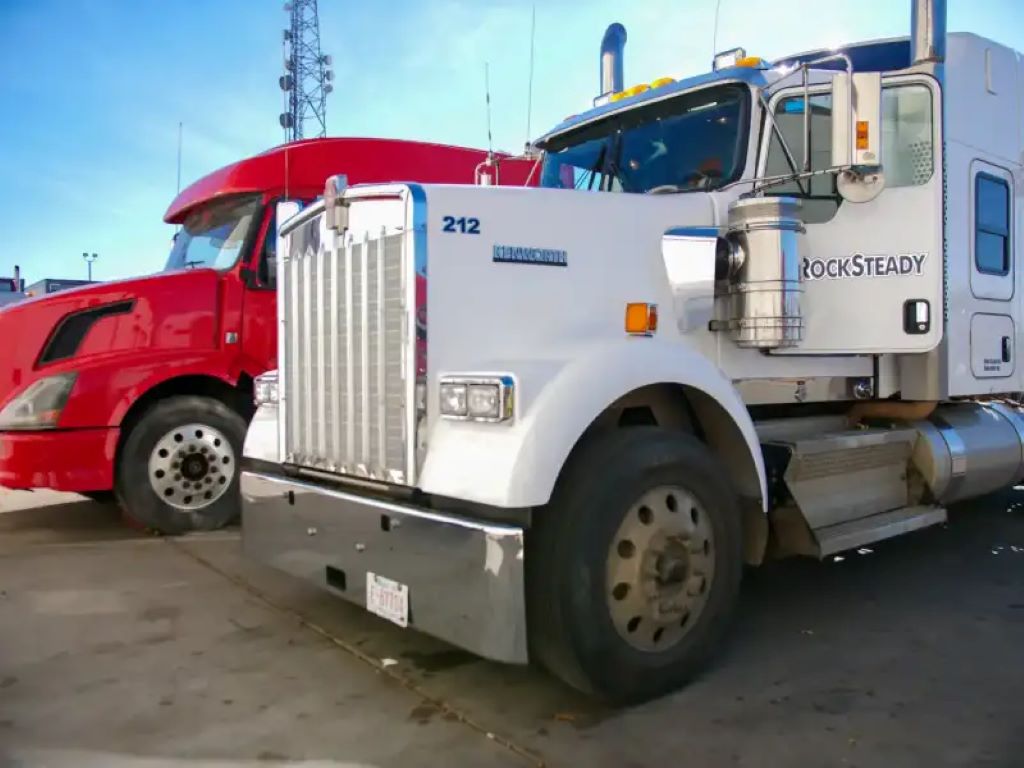The Kenworth T880 is a powerhouse of a heavy-duty truck, built to take on the toughest jobs with rugged reliability. However, even the most durable vehicles require maintenance to keep them in top condition. Bodywork is crucial to protect the T880 from the elements, preserve its value, and ensure a professional appearance.
Whether you’re a seasoned truck owner or new to the world of heavy-duty vehicles, this article will explore the essential techniques and materials involved in maintaining your Kenworth T880‘s body.
Understanding Body Damage: Types and Severity
Before diving into repairs, let’s understand the different types of body damage you might encounter on your T880:
- Dents: Dents are depressions in the metal caused by impacts. They range from minor dings to large, creased deformities.
- Scratches: Scratches are shallow marks on the paint surface, often caused by brushes, branches, or minor collisions.
- Rust: A common problem for trucks operating in wet or humid environments. Rust forms when the iron in the truck’s body oxidizes. Minor rust may appear as surface blemishes, while severe rust can compromise the metal’s strength.
- Chipped Paint: Stone chips and other impacts can lead to areas where the paint has chipped away, exposing the metal underneath.
Repair Techniques: From Minor to Major
The right repair technique depends on the severity of the damage. Here’s a breakdown of common approaches:
- Cosmetic Repairs
- Dent Removal: Paintless dent repair (PDR) is ideal for small to medium-sized dents where the paint is undamaged. A skilled technician uses specialized tools to massage the metal back into shape.
- Scratch Repair: For minor scratches, polishing compounds or scratch-repair pens can often restore the paint’s finish. Deeper scratches may need sanding and repainting of the affected area.
- Paint Chip Touch-Up: Small paint chips can be filled with touch-up paint matched to your truck’s color.
- Rust Repair
- Minor Rust: Sanding down the affected area, treating it with rust converter, and repainting can address minor surface rust.
- Extensive Rust: If rust has penetrated the metal, cutting out the rusted section and welding in new metal might be necessary. This requires professional expertise.
- Structural Repairs
- Frame and Structural Damage: Major accidents can damage the truck’s frame or structural components. These repairs require a specialized collision repair shop with expertise in heavy-duty vehicles.

Essential Materials for Body Repair
Having the right materials makes all the difference in successful body repair. Here’s what you’ll need:
- Body Filler: Used to fill dents and rebuild damaged areas. Choose a quality filler suitable for metal substrates.
- Sandpaper: An assortment of grits from coarse to fine is needed for smoothing surfaces, removing rust, and preparing for paint.
- Primer: Essential before painting to ensure good paint adhesion and a smooth finish. Select an automotive-grade primer compatible with your chosen paint.
- Paint: Use high-quality automotive paint matched to your Kenworth T880’s color.
- Masking Tape and Paper: To protect surrounding areas when painting or sanding.
- Rust Converter: Chemical used to neutralize rust during rust repair.
- Safety Equipment: Gloves, eye protection, and a respirator for sanding and painting
Proactive Measures: Preventing Body Damage
Prevention is always better than cure. Here’s how you can minimize body damage to your T880:
- Careful Driving: Be mindful of potential hazards on the road to prevent accidents and dents.
- Protective Coatings: Consider waxes, sealants, or clear protective films for an extra layer of protection against scratches and chips.
- Rust Prevention: Regularly wash your truck, especially the undercarriage, to remove corrosive salt and debris. Areas prone to rust can be treated with rust inhibitor coatings.
When to Seek Professional Help
While many cosmetic repairs can be DIY projects, it’s important to know your limits. Seek professional assistance for:
- Major dents or structural damage
- Extensive rust repair
- Complex paint matching or major repainting tasks
Maintaining Your Investment
A well-maintained Kenworth T880 holds its value and projects a professional image. Regular body maintenance will keep your truck looking and performing its best for years to come.
Advanced Repair Techniques for the Kenworth T880
Beyond the basic repair principles, here are some advanced techniques to consider for more complex T880 body repairs:
- Panel Replacement: If a body panel is severely damaged, replacement may be more cost-effective than repair. The T880’s modular design makes panel sourcing and replacement relatively straightforward.
- Fiberglass Repair: Some Kenworth T880 models feature fiberglass components like hoods. Fiberglass repair involves specialized resins and matting for restoring the damaged area.
- Plastic Welding: Cracked or broken plastic parts (grilles, trim, etc.) can often be repaired using plastic welding techniques that melt and fuse the plastic back together.
Just how much Maximum Load Could be Carried Through Courier Automobiles?
Resources for the DIY Enthusiast
If tackling repairs yourself, the internet is a valuable tool:
- Kenworth Manuals: Kenworth provides comprehensive service manuals that detail specific repair procedures for the T880. These can be purchased online or through a Kenworth dealer.
- Online Forums: Heavy-duty truck forums are a great place to connect with other T880 owners, ask questions, and share repair tips and experiences.
- YouTube Videos: Many tutorials and demonstrations exist showcasing step-by-step repair processes. Look for videos specific to the Kenworth T880.
Safety Considerations
Body repair on heavy-duty trucks involves specific safety precautions:
- Stability and Support: Always work with the truck on a level surface with parking brakes engaged and wheels chocked to prevent movement. Use jack stands for any work done underneath.
- Welding Safety: Welding requires proper safety gear, including a welding helmet, gloves, and fire-resistant clothing.
- Chemical Safety: Paints, primers, and rust converters contain chemicals. Work in a well-ventilated area, follow product instructions carefully, and wear appropriate personal protective equipment (PPE).
A Note on Environmental Responsibility
- Material Disposal: Dispose of sanding residues, paints, chemicals, and replaced body parts according to local environmental regulations.
- Product Choices: Look for environmentally-friendly alternatives for paints and primers when options exist.
Final Thoughts
Body maintenance is an essential part of responsible truck ownership. By understanding the types of body damage, repair techniques, and the importance of safety, you can take pride in keeping your Kenworth T880 operating safely and looking its best.







